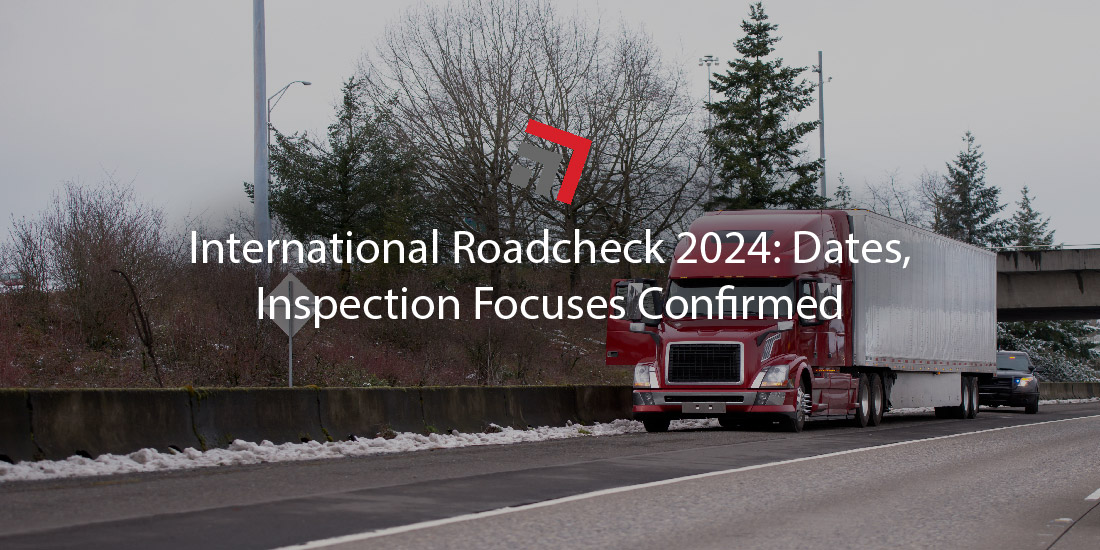This year, the Commercial Vehicle Safety Alliance’s (CVSA) annual truck safety blitz will run May 14-16.
International Roadcheck is three-day stretch where there’s increased enforcement of motor vehicle inspections across the U.S., as well as Canada and Mexico. Professional truck drivers can expect a heightened presence of police activity during the event. While they should be prepared every day of the year for inspections, drivers must be especially diligent to avoid violations during International Roadcheck, when seemingly all critiquing eyes of regulatory enforcement are closely monitoring them.
CVSA, a cross-jurisdictional association of public safety officials, defines Roadcheck as a high-visibility, high-volume commercial motor vehicle inspection and law enforcement initiative that takes place over three days in North America.
Data from the 72 hours of Roadcheck will be collected and the results will be released this summer by CVSA.
This year’s focuses on tractor protection systems, alcohol and drug possession
Each year’s Roadcheck has a different area of emphasis. For example, last year’s program focused on braking systems and cargo securement.
For the 2024 installment, emphasis will be placed on tractor (truck cab) protection systems and the possession of alcohol and controlled substances.
Specifically, CVSA defines tractor protection systems as the vehicle’s protection valve, trailer supply valve, and anti-bleed back valve. The association asserts that the last one may sometimes be overlooked during standard roadside inspections.
While the other focus—alcohol and controlled substances—comes as an area of concern following FMCSA data which conveys the number of drivers with failed tests relating to drug or alcohol possession/use has been increasing. That said, CVSA has included this issue in this year’s event to remind motor carriers of establishing and strictly enforcing policies to prevent workplace possession/use of these illicit substances.
A breakdown on inspections
Like in previous years, Roadcheck 2024’s program will feature law enforcement personnel inspecting commercial trucks and their drivers at not just weigh stations, but also at temporary sites and through mobile patrols. Those who are under inspection are subject to all federal and state (provincial) regulatory compliance.
Over the three-day period, certified inspectors will conduct their regular North American Standard Level I Inspection. During the vehicle portion of the inspection, they will examine the brake systems, cargo securement, and other mechanisms and systems. If a vehicle passes without any critical violations, it may receive a coveted CVSA decal. However, if the vehicle does not pass and, instead, inspectors find out-of-service violations, the truck will be forbidden to operate until its respective owner properly addresses the faults.
Next, inspectors will conduct the driver portion of the examination. They will check the driver’s operating credentials, license status, hours-of-service documentation, seat belt usage, and, as emphasized this year, for alcohol and drug possession/impairment.
Should a driver be flagged with an out-of-service violation, which may include them exhibiting signs of impairment, the inspector will prohibit the driver from operating their vehicle and, if applicable, take further action whether that’s an arrest or alerting the driver’s employer.
CVSA provides a “cheat sheet” on what drivers can expect during a standard driver inspection.
Final Thoughts
Courtesy of insights from FreightWaves SONAR, load rejections rose during the days leading up and through last year’s Roadcheck. The strange blip in increased rejections, especially during a time when shipper demand was low and carriers were frantic for volume, strongly suggests that some truck drivers may have chosen to holdoff from taking on loads during the three-day period of increased inspections and visibility.
It will be intriguing to see if a similar trend is observed during this year’s Roadcheck, May 14-16.
Contact one of our team members if you have any questions regarding this topic or any others in domestic logistics.
More blogs similar to this:



Recent Comments